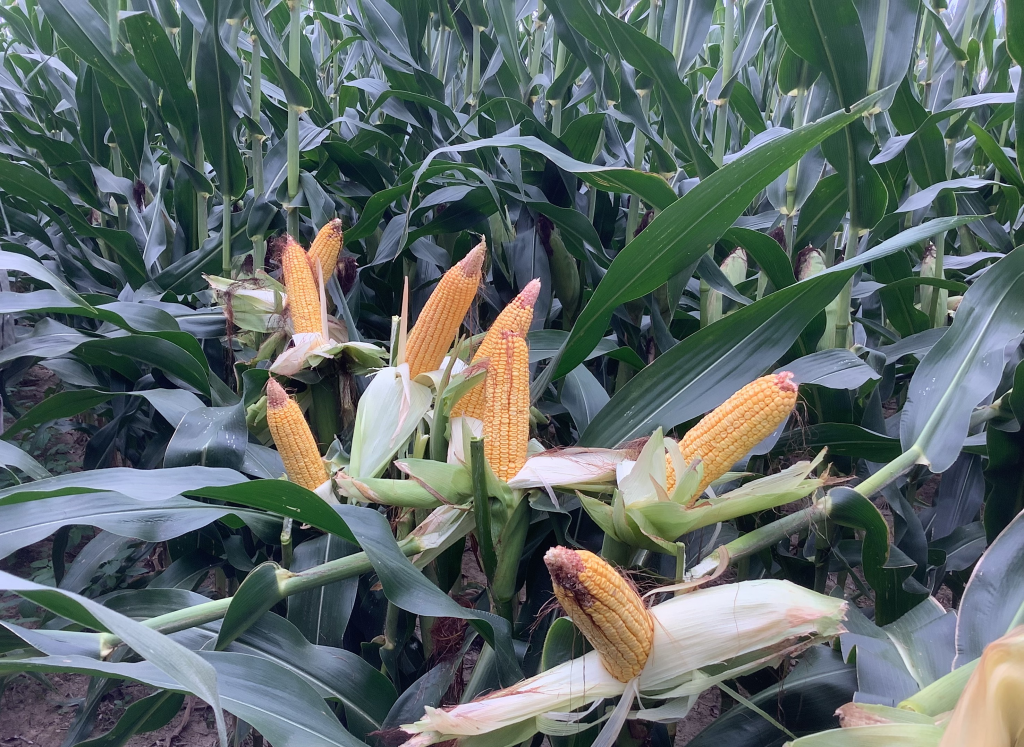
2023 emphasized the value of spreading risk with seed choices.
To say the 2023 growing season was challenging would be an understatement. But despite stressors from planting through harvest, LG Seeds agronomists in Nebraska, Minnesota, and the Mid-South report crops fared better than expected, with some hybrids shining for their ability to handle stress.
As they reflect on the growing season, it’s easy to see there are a lot of parallels – both in the challenges faced and their major takeaways.
Nebraska: July rains saved crops
“Cool, dry weather made planting tough,” says Mark Grundmayer, an LG Seeds agronomist in Nebraska. Some timely rain fell during a warm May, and then June turned hot and dry, with low humidity and wind drying out crops – especially those without irrigation.
“Irrigators were watering fast and furious – more so than they’ve ever done by the time mid-June hit,” Grundmayer reports. “Those who aggressively irrigated saw it pay dividends. Those who watered like always were hurt.”
Conditions shifted in July, with temperatures cooling and beneficial rains falling. “The July rain grew the crop we harvested.”
Mid-August featured a four- to five-day stretch of extreme heat and humidity. “Temperatures rose after Labor Day, with no humidity and a lot of wind baking the crop to done,” Grundmayer reports.
Disease pressure was minimal, but stalk quality suffered amid the stressors, he says.
Yields on irrigated acres weren’t as good as in years past, Grundmayer reports. “Dryland yields ranged from 50 bushels to 200 bushels an acre, depending on where rains fell. But those yields were generally better than expected.”
Some of Grundmayer’s main takeaways included:
- Stress tolerance will remain a top priority when it comes to seed selection in Nebraska.
- The 2023 season showed why it’s important not to put all your eggs in one basket. Having several hybrids on your farm spreads your genetic risk in terms of plant integrity, stalk quality and yield.
- Hybrids that tolerated stress and heat included LG62C07 and LG59C72 on dryland acres and LG62C52 and LG66C44 under irrigation.
- Many areas were one big windstorm away from having to pick corn off the ground. Walking fields and setting your harvest schedule beforehand is vital.
Minnesota: Corn rootworm blew up
Farmers in southern Minnesota planted most of their crops the first half of May, but a mid-month deluge forced some replant, says LG Seeds Agronomist Shane Irlbeck. “Then we turned dry, with some farmers seeing their driest season since the late ’80s.”
Corn rootworm “blew up” in Minnesota this year, according to Irlbeck. He advises those with a heavy corn rootworm infestation to “rotate crops, plant seed with protective traits, and apply insecticide – in-furrow or dry.”
Despite the dryness and disease pressures, Irlbeck reports farmers were “pleasantly surprised by their corn harvest results.”
Irlbeck says the 2023 season showcased the following:
- This year, the sweet spot was in the 100- to 102-day relative maturity (RM). But how heat accumulates and when stress hits vary each year. Protect yourself by planting a mix of maturities.
- Dry weather held back tar spot this season, but next year could be a different story. Look at the bigger picture and multiple years when making seed choices.
- Focus on placing the right hybrid on the right acre, and make sure to incorporate seed with good plant health scores.
- Hybrids that performed well in the face of stress included LG51C62, LG49C28 and LG59C72.
Mid-South: Emergence issues plagued crops
A cool, wet start caused emergence issues that carried through the season for the Mid-South, says LG Seeds Agronomist Dan Mitchell. “This fall, you could see those late-emergers in the form of stunted plants, ears that pollinated a week or two later than the rest of the field, as well as shrunken ears. Those issues chipped away at yield potential.”
The Mid-South also weathered a three-week stretch of heat and dryness starting mid-June that coincided with pollination and “created its own mess,” according to Mitchell. The resulting tip back and aborted kernels took more yield off the top.
“The good news is corn yields were better than expected,” he says. “The bad news – test weights suffered.”
For Mitchell, this season drove home the following:
- A few days’ difference in planting date with the same hybrid in the same field can result in significant yield differences.
- It’s important to plant both offensive and defensive products and place them appropriately.
- LG64C43, a new 114-day RM, will likely become a big player for farmers in the Mid-South.
Rarely does a season pass without some challenges, which is why it’s important to spread risk with seed choices. Agronomists can be a great resource with this. Grundmayer points out, “We have a wealth of datapoints to reference on product suggestions and problem-solving for our farmers.”














